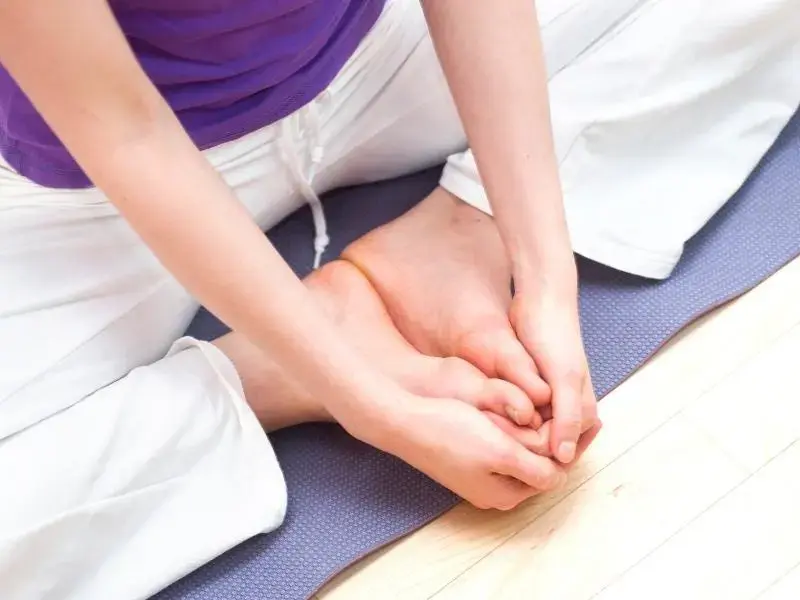Fix Your Low Back Pain, Part 5
- The Health Lab

- Sep 29, 2022
- 3 min read

This article is part five of the low back pain series, and begins to address low back pain that does not have any accompanying leg symptoms (any pain below the butt). If you DO have leg symptoms, please start back at post #3 HERE to find the appropriate approach for your pain.
If you would prefer a video summary click HERE.
This particular categorization is for people with lower back pain with no leg symptoms that might describe their back pain as “stiff” or “locked up.” Stiffness in the lower back can make it challenging to move and do all the things you love. Further, this particular pain often carries with it a lot of misinformation. Well-meaning doctors, friends, and random internet articles offer advice that is not accurate or helpful. If you’ve been offered information that tells you that your back is exceptionally vulnerable and that you really need to work to protect your back, you are not alone.
What is the goal for this classification of back pain?
If you fit this classification (low back pain, no leg symptoms, feelings of stiffness), the goal for you is going to be to alleviate pain, and then build up strength to keep pain from returning.
Can back pain improve for most people?
The answer is an overwhelming “yes.” The majority of low back pain will improve, particularly if you partner with a movement driven Physical Therapist. The exceptions are if you are having a loss of bladder or bowel, numbness in the groin, unremitting night pain, or progressive leg weakness. If you are experiencing these issues, you will need to be evaluated by a physician as this can be a sign of a significant injury that requires medical care beyond the abilities of a Physical Therapist.
Time, rest, avoidance of activity, imaging, and injections are NOT the quick-fix answers to healing back pain, even though they are the answers that are primarily being sold by the medical system. Usually these produce minimal short term improvements with significant long term physical and mental barriers to actually getting better.
So how do you work through this pain?
If you are in this category of back pain and find that as you move around you experience a “catch” in your back or a general feeling of stiffness, there are fortunately some things you can do at home to help alleviate these symptoms and perpetrate better movement.

1) Ditch the Ice & Heat
Things like ice and heat can feel nice but ultimately, if you are not moving through some of the muscle tension then your improvement will be minimal. The only time ice or heat should be used is if it helps you to move.

2) Romanian Deadlift
Step by Step Guide:
Stand with feet hip width apart
Cross your arms over your chest
Hinge at your hips, moving your trunk forward
Keep your back flat as you move
You should feel your back muscles working
You should feel your hamstring muscles stretching
There should be no pain down your legs

3) Captain Bends
Step by Step Guide:
Put either leg up on a chair with hip width stance
Let you arms slide down your body, reaching for the ground
Allow yourself to curl your whole spine
You should feel warmth in your back muscles
There should be no pain down your legs

4) Banded Punches
Step by Step Guide:
Anchor a band around something solid
Grab the other end and step away from the anchor
Stand with a hip width stance
Punch your hands straight out
Resist the band from rotating your spine
Move your hands back and forth for reps until fatigue
Core and legs should be working
There should be no pain down your legs

5) Supported Squats
Step by Step Guide:
Hold onto something solid that can support your weight
Stand with a hip width stance
Slowly squat down keeping your back flat
Use your arms to unweight your body as needed
You should feel some stretch in your body/back
Legs should be working, but not struggling
There should be no pain down your legs
If these exercises do not relieve your symptoms and help you return to normal movement, you may need the assistance of a Physical Therapist. Further, if you do find that you are having a loss of bladder or bowel, numbness in the groin, unremitting night pain, or progressive leg weakness, you need to see a physician immediately.

Whether you need a little support and direction, are completely confused or overwhelmed by the process, or are just unsure of where to start, call the Health Lab today to schedule your free 30 minutes discovery session to see how we can help you heal your body, make it more resilient, and get you on the road back to health and wellness.




Comments